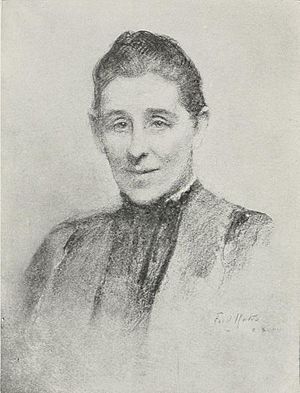Armitt Library facts for kids

The Armitt Museum, also known as the Armitt Museum and Library, is a special place in Ambleside, a town in Cumbria, England. It's both a museum and a library! It was started in 1909 by a kind lady named Mary Louisa Armitt. It's run by a charity, which means it's there to help the public.
Contents
The Armitt Museum's Story

The Armitt Museum and Library began because Mary Louisa Armitt wanted to celebrate all the smart and creative people from Ambleside. Its roots go back to the Ambleside Book Society, which started way back in 1828. This book society later became part of the library.
Opening Day and a Special Poem
The library officially opened its doors on November 8, 1912. To celebrate, Hardwicke Rawnsley, who helped create the National Trust, wrote a poem. The poem talked about "two happy sister spirits." These sisters were Mary Louisa Armitt, who had passed away the year before, and her sister Sophia Armitt.
Beatrix Potter's Gifts
The famous author and illustrator Beatrix Potter loved the Armitt Museum. During her lifetime, she gave many books and paintings to the museum. When she passed away, she left her amazing collections of natural history watercolors. She also left her own copies of her beloved "little books." You can see these special items on display in an exhibition called Beatrix Potter: Image and Reality.
The Modern Building
The building you see today was built in 1997. It's made from local slate and stone. It stands on land that used to belong to St Martin's College, which was once called Charlotte Mason College.
Art by Kurt Schwitters
The Armitt also has a collection of artworks by Kurt Schwitters. He was a German artist who came to Ambleside as a refugee. He lived and died there, leaving behind some of his unique art.
The Library's Amazing Collection
The library at the Armitt Museum holds over 11,000 books! These books are all about the local history and nature of the Ambleside area. They also cover the wider Lake District. It's a fantastic place to find information about important people connected to the area. These include Mary Louisa Armitt, William Wordsworth, Harriet Martineau, John Ruskin, Frederic Yates, Canon Hardwicke Rawnsley, and Kurt Schwitters.
See also

